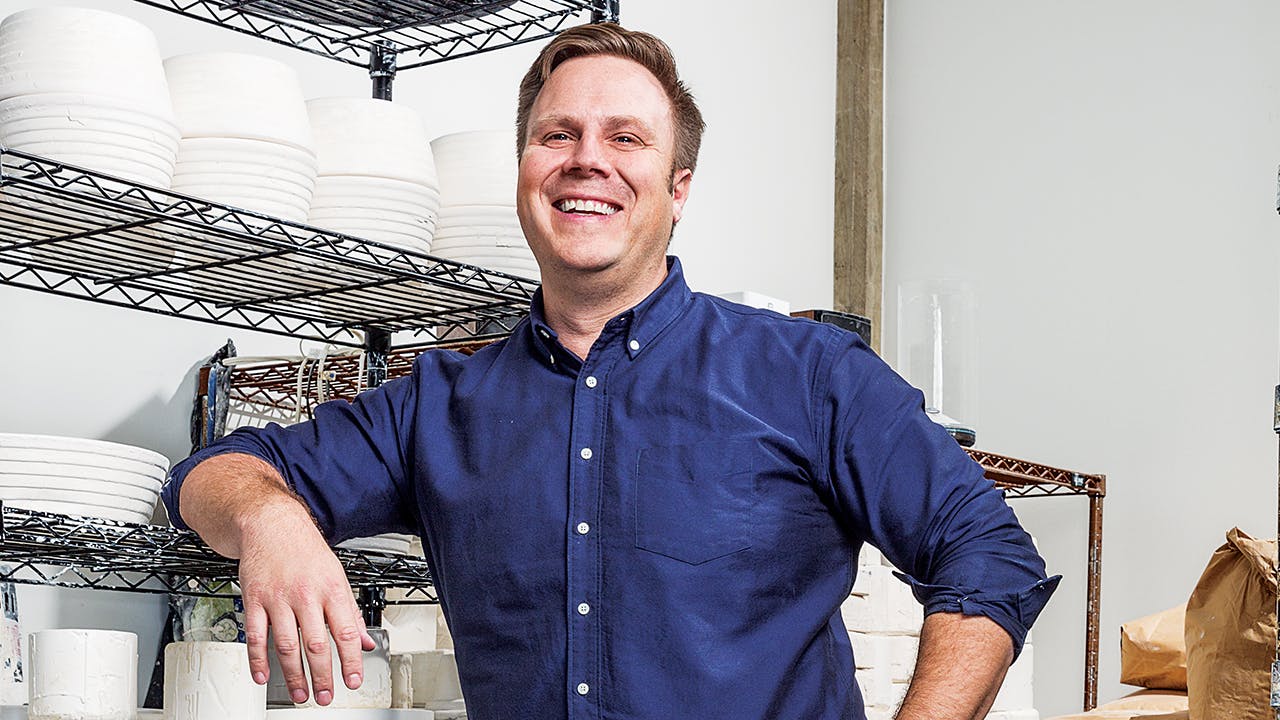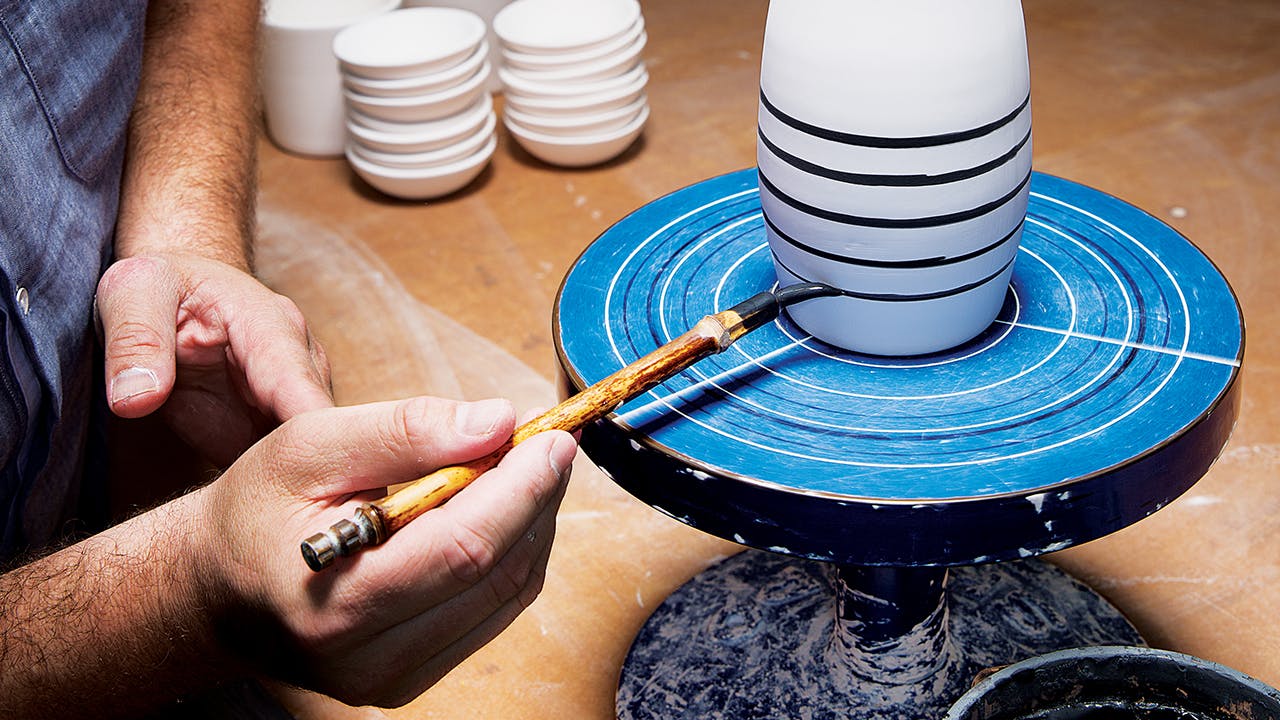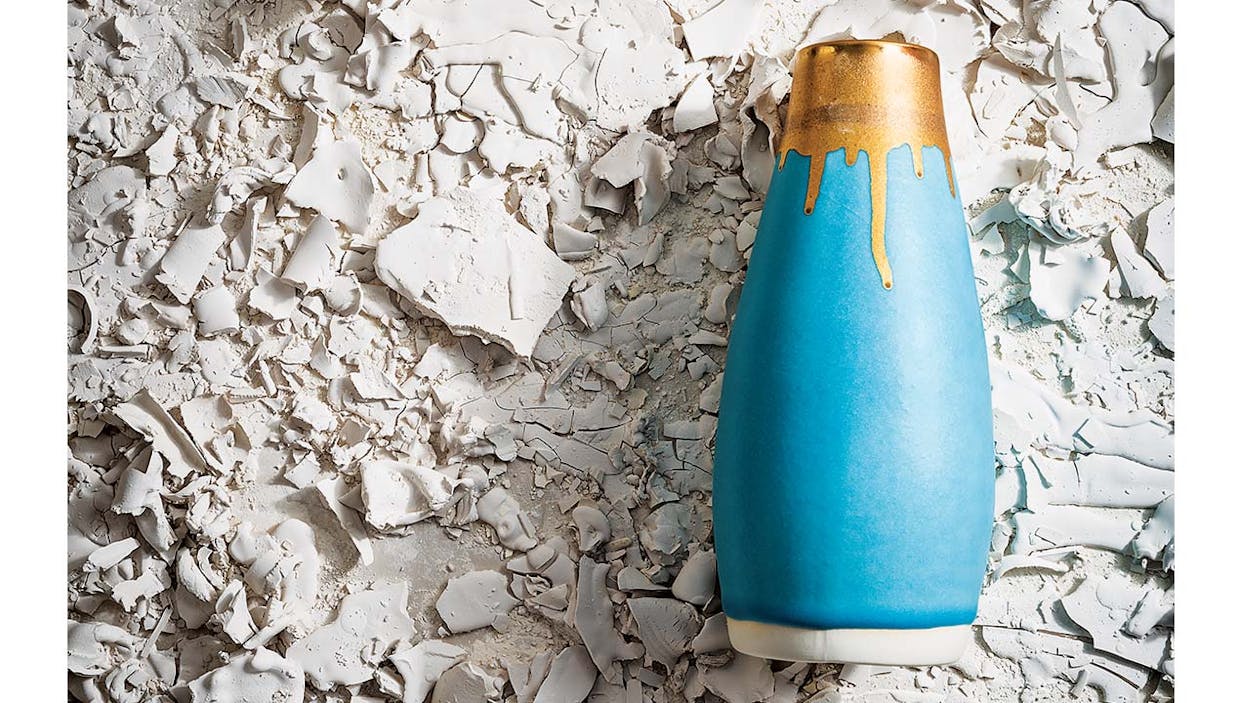In his East Austin studio, Keith Kreeger sets his three kilns to 2,400 degrees. Glazing inside are glossy black porcelain bowls and serving dishes with gold paint dripping from the rims. Kreeger’s newest collection is a bit glitzier than the classic white pieces, embellished only with thin black lines, that have become the accidental potter’s signature design. Not too fancy, but far from plain, his dishware can be found on tables in 36 restaurants across the country, not to mention in dozens of his fans’ Instagram posts. Given his success, it’s hard to believe that Kreeger, a native New Yorker and father of three, didn’t always intend to lead a creative life. After spending a summer interning on Capitol Hill, he planned to go to law school—until he took a ceramics class at Skidmore College, in Saratoga Springs, New York. It wasn’t long before he was pulling all-nighters at the potter’s wheel and dreaming of earning his MFA in ceramics. It was during a visit with celebrated ceramic artist Toshiko Takaezu that Kreeger’s new life plan really began to take shape. “She asked if there was anywhere that I could start my own studio,” he says. “I told her about my family’s property on Cape Cod and said that if it was still there in five years I’d build a studio there. She responded very matter-of-factly: ‘Do it now.’ I was up all night thinking about that. The next morning, I called my folks and asked if I could use that vacant building.” He ran his studio and shop on the Cape for the next eleven years before his wife, Evangelina, who grew up in Houston, persuaded him to move to Austin, in 2009. Even as he’s steadily built his business and become one of the restaurant industry’s go-to makers, Kreeger says he’s still learning new things about the complexity—and rewards—of his craft. “Once a piece is finished, the marks from your hand are still there and you know that that piece will last for a really long time.”

Q&A With Keith Kreeger
What do you love most about working with clay?
It’s all about respecting the process. Clay is an incredibly intimate material. You’re constantly working it and it’s responding directly to your touch. I still lose pieces I’m working on because the clay stops agreeing with my idea of what it’s supposed to be doing. It will let you know when it’s finished with you.
What are the differences in your process when creating a porcelain piece versus an earthenware piece?
The main difference when working with porcelain, earthenware, and stoneware is the firing temperature and particle size. The higher you fire, the sturdier and stronger the final piece is. I currently work only with porcelain, which is super-sturdy because it can be fired at very high temperatures. But it can be a bit harder to work with because, on a microscopic level, most of the particles are the same size and shape, which means it’s a bit harder to keep it standing as you work it.

What was your first restaurant commission?
The first large-scale restaurant work we did was for Qui, in Austin. I was kind of shocked to get a call from the general manager, June Rodil, who somehow knew about me. That was one of those jobs that you say yes to and then figure out how to pull off afterward.
Chefs can be complex characters. What’s your secret to collaborating with them?
It’s not that difficult, because they’re just like artists and they work with their hands much like I do. And since we’re all process nerds, it’s easy to understand each other. They have to take an idea and figure out how to make it happen—and then they have to execute it again and again. I love having chefs come to the studio to watch how they interact with my work.
I hear you’ve been known to use your kilns to keep your Franklin barbecue warm.
It’s true. My sister-in-law once dropped off some Franklin barbecue after she’d waited in line with her parents, who were visiting from Japan. I had a friend coming over later in the day, so I set a kiln to hold at 140 degrees, and two hours later we had a feast! I’ve also used them to reheat pizza and to bake homemade biscuits.
For more information, go to keithkreeger.com.







